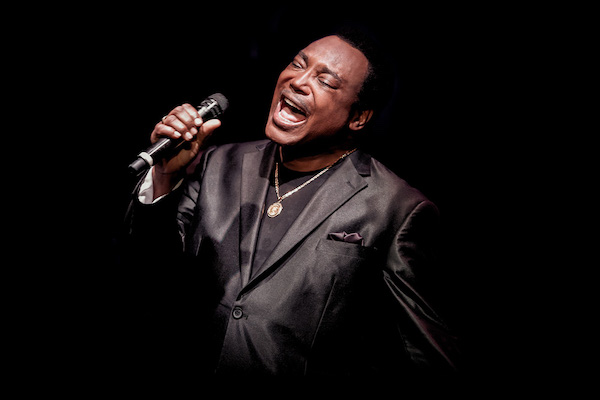Dec 9, 2025 12:28 PM
In Memoriam: Gordon Goodwin, 1954–2025
Gordon Goodwin, an award-winning saxophonist, pianist, bandleader, composer and arranger, died Dec. 8 in Los Angeles.…

George Benson’s latest album was recorded live at Ronnie Scott’s in London.
(Photo: Carl Hyde)“He plays jazz language, not guitar language. George really hears all those lines. He knows jazz, bebop and after, and all that just flows out of him.
“We all bow down to George. There’s a whole school of younger guys trying to play like him.”
Prominent among the younger players influenced by Benson is Camila Meza. Born and raised in Chile, Meza, 35, first became aware of Benson when, as a 16-year-old, she heard bootleg copies of the 1976 disc Breezin’. That album, pushed to triple-platinum status by the title track and “This Masquerade,” was Benson’s commercial breakthrough. To a jazz novice, Meza said, it was a revelation that opened up a new world.
“I was coming more from a funk-soul-rock background,” she said. “This was an incredible segue into jazz and his story, all the way back to his earlier albums. It blew my mind that this was very accessible but at the same time he was playing incredible solos and singing with his guitar.”
Meza has incorporated a Benson-like style of scatting and playing into her aesthetic.
“That texture will really bring an emotion out of a song,” she said. “It’s like bringing in a new instrument.”
Benson’s merger of voice and guitar grew from a seed planted when he first heard Charlie Parker: “I was always a singer. I sang whatever was on the jukebox. I played guitar behind my singing, and pretty soon people asked me to play guitar with them. I took a few gigs and I started getting a reputation as a guitar player.
“I started going to jam sessions, where they hated me because I didn’t know anything about jazz or bebop. My natural father, who played trombone, drums and piano, came to me and said, ‘Why do you keep playing that corny stuff? Why don’t you play like Charlie Parker?’ I said, ‘Charlie who?’ And he said, ‘Now I know why you can’t play nothing.’”
After that conversation, Benson said, he fell for “Just Friends,” from the 1949 album Charlie Parker With Strings: “It was on the jukebox. Every time I got a nickel or a dime or a quarter, I put on that song, and I learned that solo. I couldn’t play it, but I could sing along with it, note for note. Everything else was easy. The stuff I’m doing on my records now is like candy compared with that Charlie Parker solo.”
Benson serves up plenty of sweet stuff on Weekend In London. While his signature scatting is parceled out judiciously—a tart example is heard on “Love Ballad” (a 1979 single)—he is in fine voice, delivering honied ballads (“In Your Eyes,” the title track to a 1983 album), funky hits (“Turn Your Love Around,” which topped the r&b charts in 1982) and rollicking covers (“I Hear You Knocking).”

Goodwin was one of the most acclaimed, successful and influential jazz musicians of his generation.
Dec 9, 2025 12:28 PM
Gordon Goodwin, an award-winning saxophonist, pianist, bandleader, composer and arranger, died Dec. 8 in Los Angeles.…

Nov 13, 2025 10:00 AM
For results of DownBeat’s 90th Annual Readers Poll, complete with feature articles from our December 2025 issue,…

Flea has returned to his first instrument — the trumpet — and assembled a dream band of jazz musicians to record a new album.
Dec 2, 2025 2:01 AM
After a nearly five-decade career as one of his generation’s defining rock bassists, Flea has returned to his first…

“It’s a pleasure and an honor to interpret the music of Oscar Peterson in his native city,” said Jim Doxas in regard to celebrating the Canadian legend. “He traveled the world, but never forgot Montreal.”
Nov 18, 2025 12:16 PM
In the pantheon of jazz luminaries, few shine as brightly, or swing as hard, as Oscar Peterson. A century ago, a…

Dec 11, 2025 11:00 AM
DownBeat presents a complete list of the 4-, 4½- and 5-star albums from 2025 in one convenient package. It’s a great…